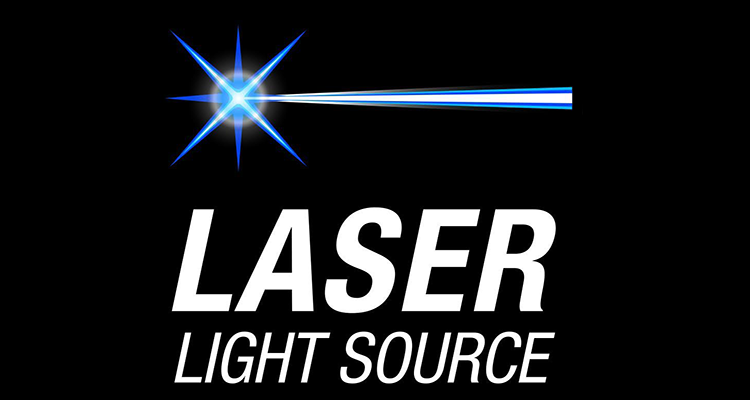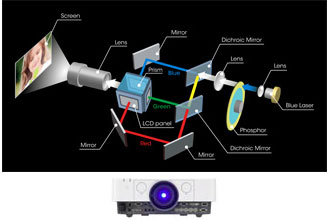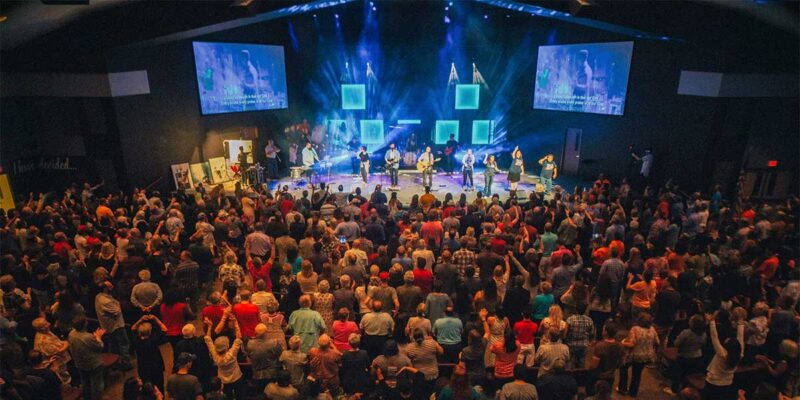Laser Projection in Churches
 Every single time I get asked about laser projection, I think of the Austin Powers movie franchise villain, Dr. Evil, and his obsession with putting lasers on sharks. While the audiovisual industry has yet to rise to that dubious challenge, the addition of lasers in projectors is an important innovation. I further submit that it’s important for the house of worship market even if it doesn’t further the aims of movie henchmen. It’s time for laser projection in churches.
Every single time I get asked about laser projection, I think of the Austin Powers movie franchise villain, Dr. Evil, and his obsession with putting lasers on sharks. While the audiovisual industry has yet to rise to that dubious challenge, the addition of lasers in projectors is an important innovation. I further submit that it’s important for the house of worship market even if it doesn’t further the aims of movie henchmen. It’s time for laser projection in churches.
When churches ask me about laser projection, they are generally excited for one main reason: no more expensive lamps to replace. Though this is a strong benefit in the marketing pitch of laser projection manufacturers, it’s important to help educate this market on the differences between lamp-based, LED-based and laser-based projection.
Let There Be (Projected) Light
The radical increase in resolution was the last major innovation curve for projection. Today, the light source is the next breakthrough in providing projection options. However, not all light is the same. By starting with an overview of luminance technologies, we can help churches understand and narrow down their research to projectors that meet their expectations and budget.
There’s no doubt that lamp-based projectors continue to be the de-facto standard. The enormity of lamp-based projection devices is sure to see them sell well into the future even with the cost of replacement lamps. In days past, the focus was on the dichotomy of making them brighter while simultaneously making them cheaper to produce. This saw the introduction of dual-lamp and even quad-lamp projectors vying for a combination of built-in redundancy and ever-increasing brightness options. However, the cost of replacements meant that in order to color match, it was necessary to replace more than one lamp at a time, adding to the maintenance and ownership costs of these devices.

With the advent of lampless projectors, the cost has shifted, but not gone away entirely as the total expected life expectancy of LED and laser-based projectors ranges between 20,000 and 30,000 hours. This is a different total cost of ownership of lamp-based projectors which, with ongoing cleaning and maintenance, can last substantially longer by replacing the lamps and filters. It’s an apples-to-Volkswagen comparison, wherein the differences must be presented so prospects and existing clients are educated to make the best purchase decision for their venues.
The table below demonstrates just how much innovation has been focused on projection light sources.
| Traditional lamp-based projectors | While the lamp types are still varied (UHP varieties and metal Halide varieties), the cost per lamp has dropped dramatically from thousands of dollars to hundreds of dollars each. Lamp life, too, has also increased over the years, with 2,000-hour lamps now common. |
| LED illumination | LED as a light source in projectors are still low-brightness and are found in the ultra-portable (as in pocket-sized) line of tiny projectors. No heat, low energy and very small but with usually only a few hundred lumens possible. |
| LED with at least one laser | Often a single laser with an added color wheel to help expand beyond the Red, Green, and Blue to include Yellow, Magenta, and Cyan. These are some of the least expensive “laser-based” projectors. |
| LCD with at least one laser | Similar to traditional lamp-based LCD projectors, these use a single laser instead of a lamp and LCD panels with dichroic mirrors to create the full-color spectrum. Also on the lower-end range of projectors. |
| Laser with Phosphor Wheel | This hybrid approach typically uses only blue lasers but adds phosphor on a rapidly spinning wheel similar to the single-chip DLP projectors to achieve the Red, Green, and Blue color mixing. |
| Three laser projection | This is the pure end of laser projection utilizing a direct fire laser system without any phosphor wheels. These are the brightest, highest resolution, highest contrast ratio projectors on the high-end of the spectrum. |
Establishing this baseline for educating prospects and existing clients alike is a helpful step in providing expert advice and specific recommendations to match budgets, venues and client expectations.

Example of a single laser phosphor projection device by Sony.
Wholesale Projector Fleet Replacement?
There’s a significant opportunity for the AV industry to market the opportunity to drastically reduce operating costs of not only their installed base of projectors but also to reduce energy costs with these far more efficient laser projectors that can even affect the HVAC cooling costs in venues where the heat projectors impacts the room temperature in smaller venues.
Consider the church that has two or three projectors in their main auditorium, ten to twenty projectors in classroom and meeting rooms, not to mention other venues like a hall, youth area and visitor welcome centers. A wholesale change-out isn’t inexpensive up-front cost, but it’s simple to calculate the cost savings over five to 10 years in lamp costs alone. It’s a compelling argument that would have more than a few churches writing new purchase orders in a strategic shift for more efficient stewardship of donated funds.
This is just the beginning salvo of changes that are coming precisely because of the innovation brought about by laser projection. With over 300,000 churches — and millions of church venues that use lamp-based projection — the opportunity for manufacturers and systems integrators and box retailers alike is immense. Will your firm take the lead in laser projection with the house of worship market?
What say you? Share your views and links in the comments below.





